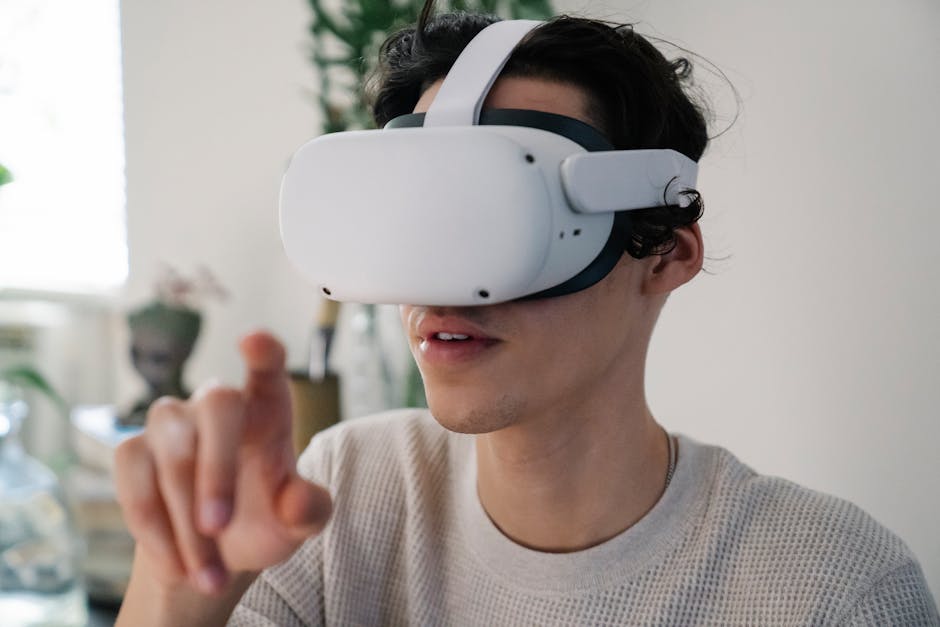The Hidden Legal Landscape of AR: Safeguarding Your Rights Today
The advent of augmented reality (AR) has transformed our interaction with the digital world, making it not just an extension of reality but a canvas for new experiences. However, as the lines between the virtual and physical realms continue to blur, so do the legal implications surrounding user data and rights. In an era where augmented reality is becoming commonplace, understanding its legal landscape is not merely advisable; it is essential for both users and creators.
This article ventures into the often overlooked yet critical legal aspects of augmented reality, exploring how creators and users can protect their rights and data in this blended world. From navigating user consent to understanding privacy laws, we will delve into the hidden legal intricacies tied to AR. So, fasten your seatbelt, and let’s navigate the legal labyrinth of augmented reality together.
The Rise of Augmented Reality: Why Legal Precautions Matter

Augmented reality has made waves across various industries—gaming, education, real estate, and healthcare, to name a few. This technology enhances real-world experiences by overlaying digital images, sounds, and interactive elements onto the physical environment. Popular AR applications like Pokémon GO and Snapchat filters have demonstrated the immense potential of this technology. However, with great innovation comes great responsibility, particularly concerning user rights and data privacy.
As the AR landscape evolves, so too does the necessity for robust legal frameworks to protect users and creators. The reality is that while users focus on enjoying immersive experiences, they may unknowingly consent to data practices that could infringe on their privacy. Consequently, understanding the legal landscape of AR becomes paramount.
Understanding User Data Rights in Augmented Reality

One of the most pressing concerns in AR is the collection and management of user data. When engaging with AR applications, users often provide personal information like location, preferences, and even biometric data. The key legal question here is: how is this data collected, used, and shared?
Regulations such as the General Data Protection Regulation (GDPR) in Europe and the California Consumer Privacy Act (CCPA) provide frameworks that govern how companies should handle personal data. For instance, under GDPR, companies must obtain clear and explicit consent from users for data collection, a practice that should become standard for AR applications.
However, many users are unaware of their rights concerning data sharing. Creators and developers need to prioritize transparency, ensuring users understand how their data is being utilized. Failure to comply not only risks legal penalties but also damages user trust and brand reputation.
Navigating Consent: The Legal Obligation of Augmented Reality Developers

In a world where technology advances faster than the law can keep up, developers need to be vigilant about obtaining consent. This goes beyond a simple checkbox during app installation. It entails ensuring that users are fully informed about what they consent to, ideally through streamlined terms and conditions.
AR developers should implement best practices by adopting clear, user-friendly interfaces that explain data collection processes. This not only helps fulfill legal obligations but also builds a trustworthy brand image. Offering users the ability to opt-out or modify permissions could mean the difference between a positive user experience and a legal nightmare.
For further information on the implications of consent in digital realms, be sure to check out this informative piece.
Intellectual Property Challenges in AR: Protecting Your Creations

As augmented reality environments come alive with creativity, intellectual property (IP) considerations emerge as pivotal. Just as artists safeguard their works in traditional artistic mediums, AR creators face unique challenges in protecting their designs and contents.
From AR filters to 3D models, various forms of content are often birthed within AR platforms, leading to potential disputes over copyright ownership. A core legal principle states that original works are protected from the moment they are fixed in a tangible medium. However, the digital nature of AR complicates the ability to determine ownership and exploitability.
Creators are advised to apply for copyright protection and ensure that their proprietary information is safeguarded through contracts. Popular platforms should also make licensing agreements clear to users—failure to do so can lead to misuse or misappropriation, causing disputes.
For more insights on navigating ownership and IP in the digital domain, check out this resource.
Privacy Implications: Who’s Watching You in AR?

With AR applications often employing location-tracking and facial recognition capabilities, privacy risks permeate the technology. Users may not realize that simply using an AR feature like a filter can lead to extensive data collection.
Tailored privacy policies should elucidate how companies will use this data, with emphasis on retention periods and potential sharing with third-parties. Developing clear privacy practices not only aligns with legal requirements but also fosters user loyalty.
The rise of deepfake technology also ties into privacy concerns. As AR becomes more immersive, the unauthorized use of individuals' likenesses can lead to reputational damages and exploitation. To understand the implications better, see this article.
Emerging Legal Issues in Augmented Reality: The Future is Now

Technology is evolving rapidly, which means the legal interpretations related to AR must follow suit. As we look toward the future, issues involving digital twins, AI witnesses, and human rights will likely become more pronounced. The implications for creators and users will escalate unless we establish adaptive legal frameworks.
Take, for instance, the application of AI in AR experiences. As creators utilize AI to enhance user engagement, legal complexities around liability, responsibility, and ownership arise. It's crucial for developers to stay informed about these changes.
For creators navigating these waters, consider exploring this critical discussion for insights on co-creators’ rights and responsibilities.
The Need for Adaptive Legal Frameworks in AR

The rapid growth of augmented reality necessitates the development of proactive legal frameworks that can adapt to technological innovations. Lawmakers and industry professionals alike must collaborate to draft legislation that not only protects consumers but also fosters creativity and innovation.
One effective approach might involve creating industry standards related to privacy, IP rights, and data management in AR. This initiative could unify practices across different platforms and applications, thereby simplifying compliance and enhancing user trust.
Moreover, creating dialogue around the ethics of decentralized justice could pave the way for new legal paradigms that address the AV user’s rights and experiences. The insights offered in this article highlight how emerging technologies can redefine justice in a global digital landscape.
Final Thoughts: Navigating the Future of AR Responsibly

As augmented reality continues to weave itself into the fabric of our lives, understanding the legal landscape becomes all the more critical. By grasping the implications of user data rights, consent, intellectual property, and privacy, both developers and users can protect themselves in this blended world.
Remember, being informed is your best form of protection. Developers should prioritize transparency and user-friendly practices to cultivate trust, while users must educate themselves on their rights and potential risks. Staying updated on evolving regulations and industry standards will grant us the tools we need to navigate the exciting, albeit complex, world of augmented reality.
Your Next Steps
Are you a developer working in AR? Now is the time to reevaluate your privacy policies, data management strategies, and consent methods. If you’re a user, take charge of your privacy by thoroughly understanding what you are consenting to when downloading AR applications.
For further reading on legal challenges in the tech sphere, check out this legal guide for creators. Embrace the possibilities AR holds, but do so responsibly and knowledgeably.



